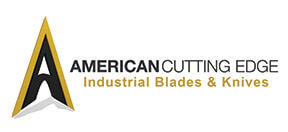American Cutting Edge Blog
-
To optimize your granulator production and adequately plan for downtime, understand when your granulator blades are performing as efficiently as possible and when a maintenance action may soon be required. For granulating operations, performing preventative maintenance can save hours of unplanned downtime and increase the safety of the processing environment. However, for many granulators, maintenance is performed just-in-time (JIT), which requires recognizing the early warning signs of a maintenance condition.
"Proper preparation prevents poor performance." - Charlie Batch
Is Your Granulator Working Too Hard?
As granulator blades dull, the granulator requires more electricity to perform. Check amp readings of your granulator just after maintenance is performed and note the
-
Films, vinyl, fabrics, non-wovens, laminates, paper, and heavy film are often manufactured onto large, bulk material rolls. These rolls are too large to utilize in the end product, so the material is converted into smaller rolls for final production using a process called slitting.
During the slitting process, the material on a master or parent roll is unwound and cut into specific widths (slit widths) by traveling through a series of blades. Razor slitting, crush cut slitting, and shear slitting are the three most common types.
Razor Slitting
Razor slitting is easy and inexpensive to set up and is commonly used to convert films, plastics, tapes, ribbons, and vinyl. Using razor slitting, the material can be converted into very narrow slit widths and still produce very little dust, making it one of the cleanest methods of slitting.
The blades used for razor slitting are inexpensive and require more frequent changes than with other types
-
Optimizing the performance of your converting blades allows you to obtain the longest life, highest quality cuts, and maintain cutting efficiency. Blades that meet the ideal specifications for your converting machine and cutting material provide optimum performance and contribute to increased uptime to ensure the highest outputs.
Changing your current knife selection is not the only way to increase your converting knife performance. Often, the best choice is to upgrade your existing knife to provide better performance, lifetime, and efficiency.
Upgrade Blade Material
Evaluating and adjusting the blade material of your converting knife can dramatically increase the efficiency of your converting machine. If you are experiencing low runtime, low lifetime, or machine inefficiencies, changing to a new blade material may be

